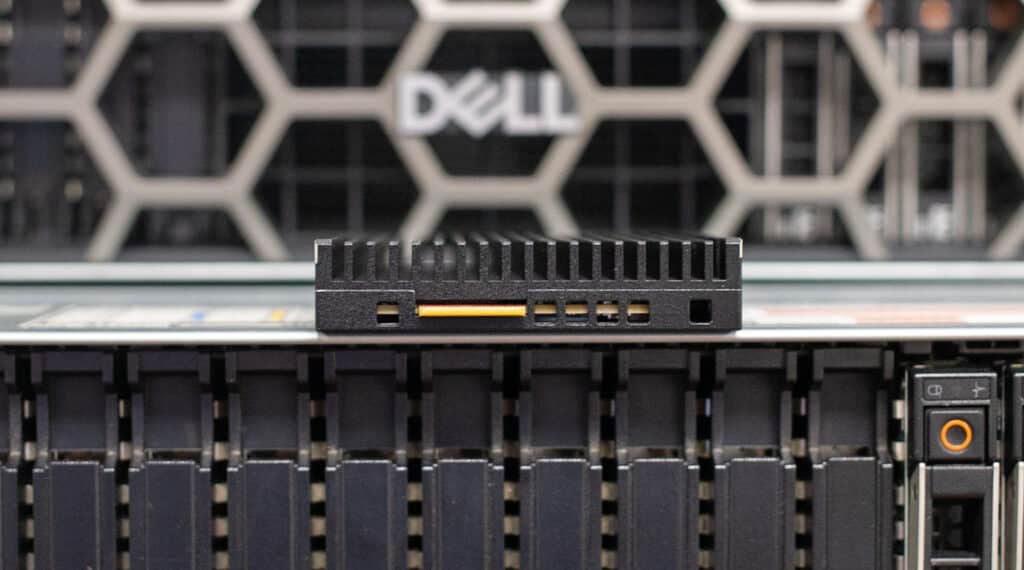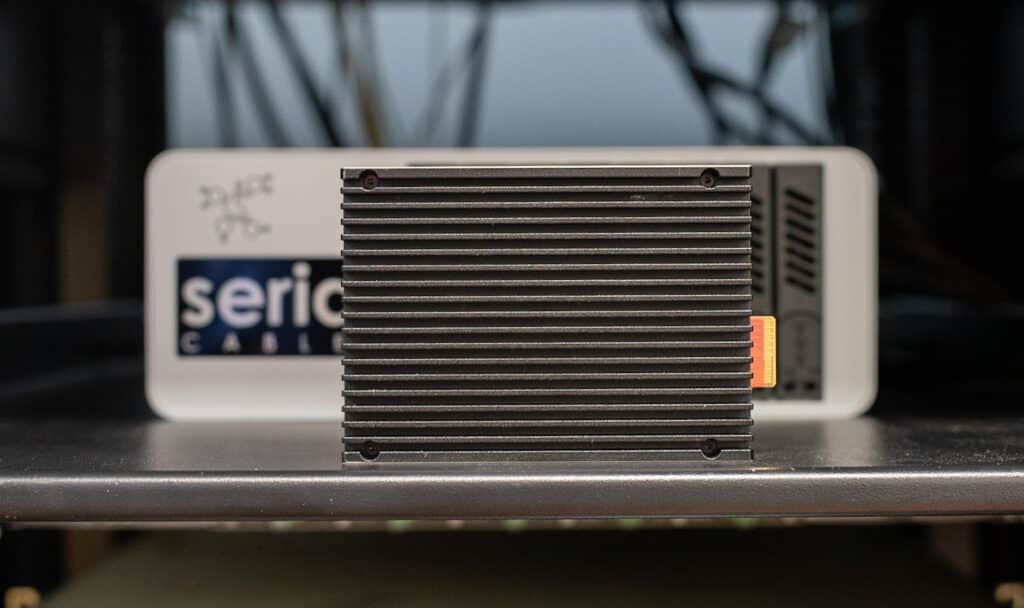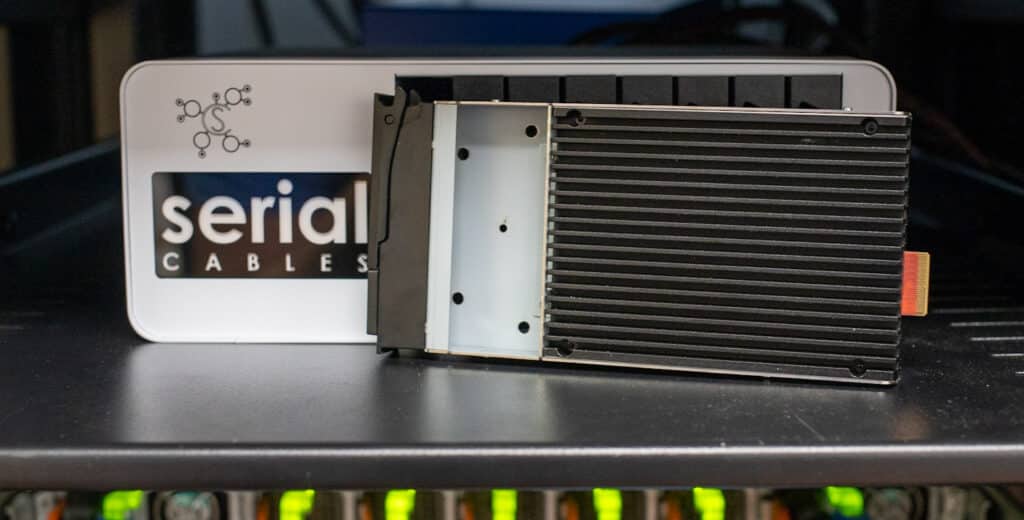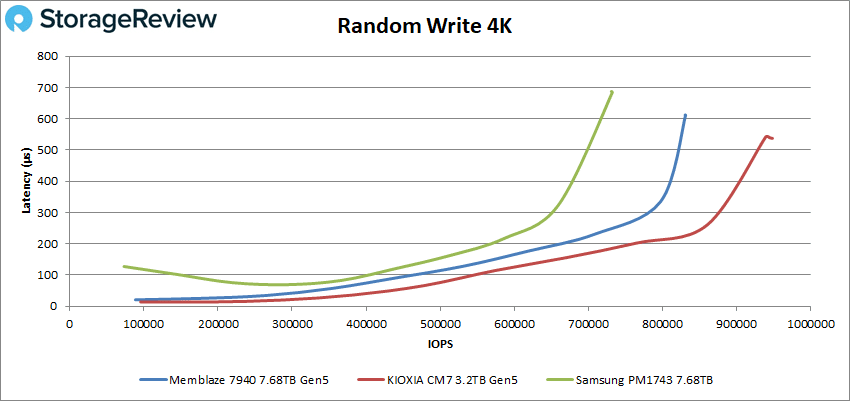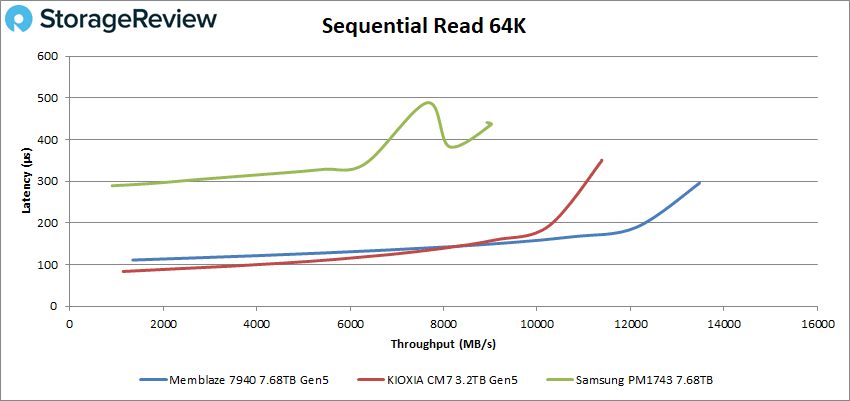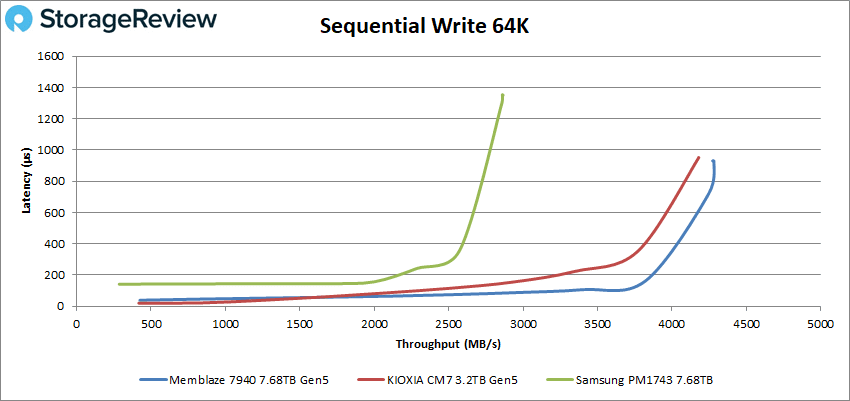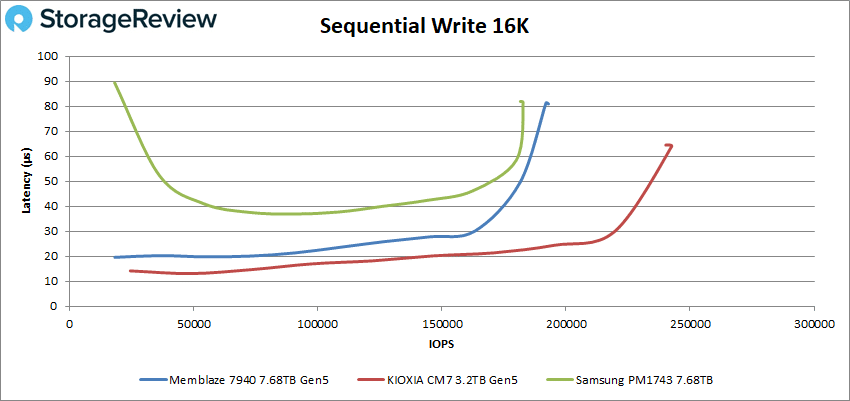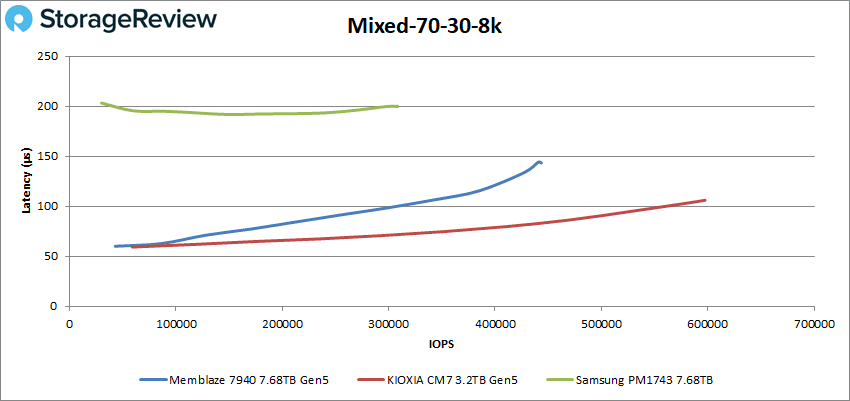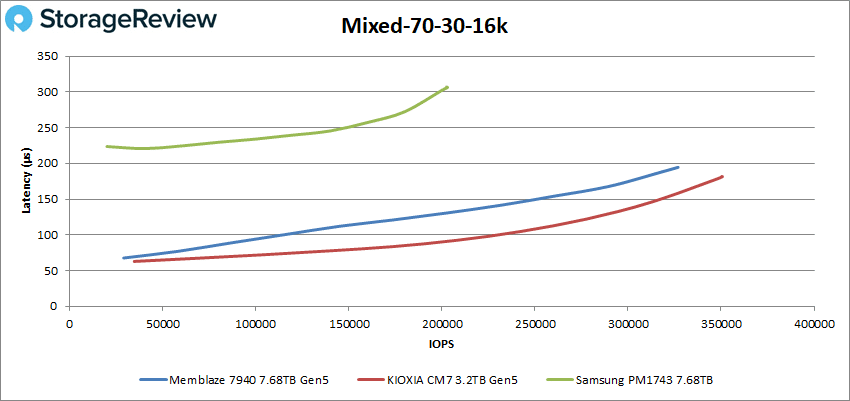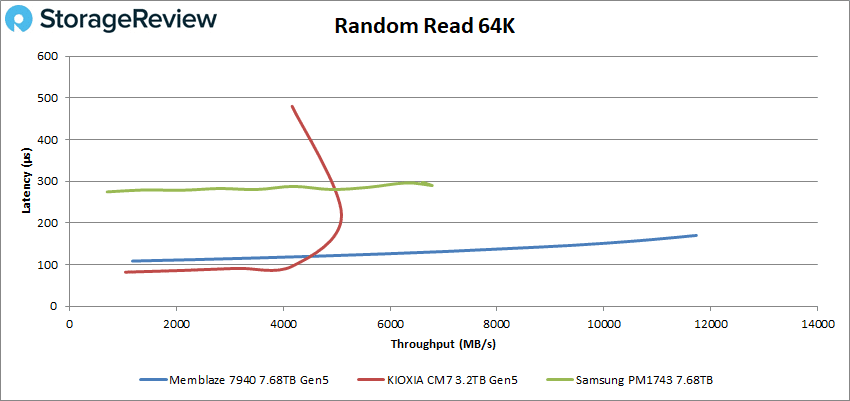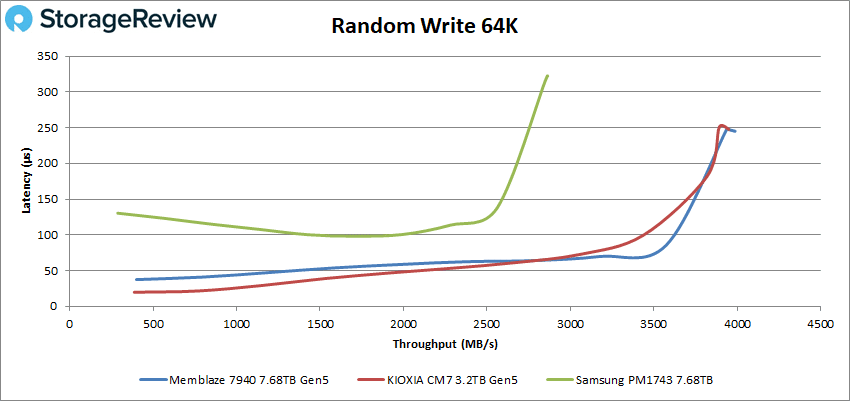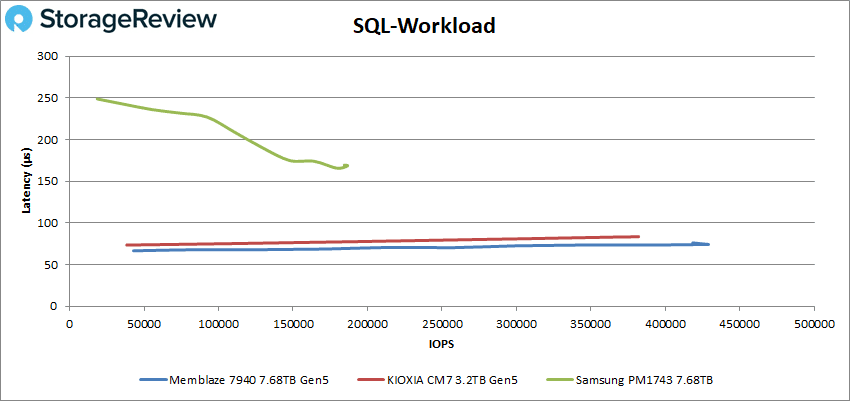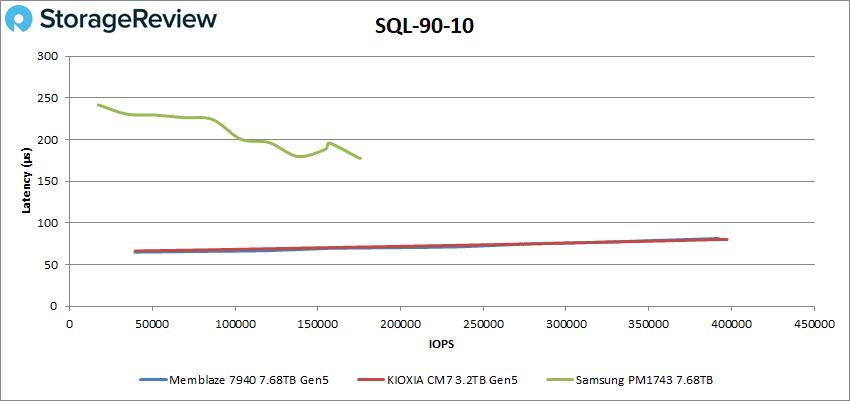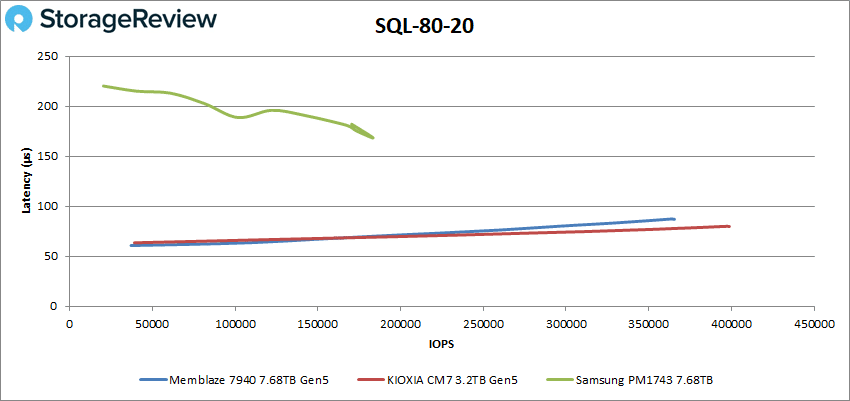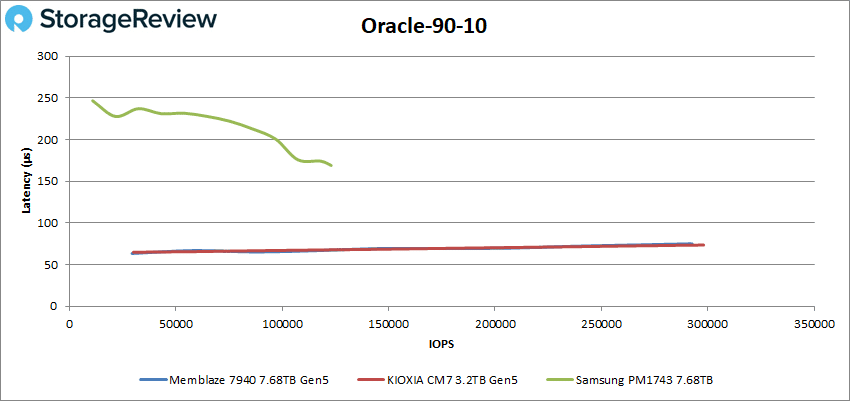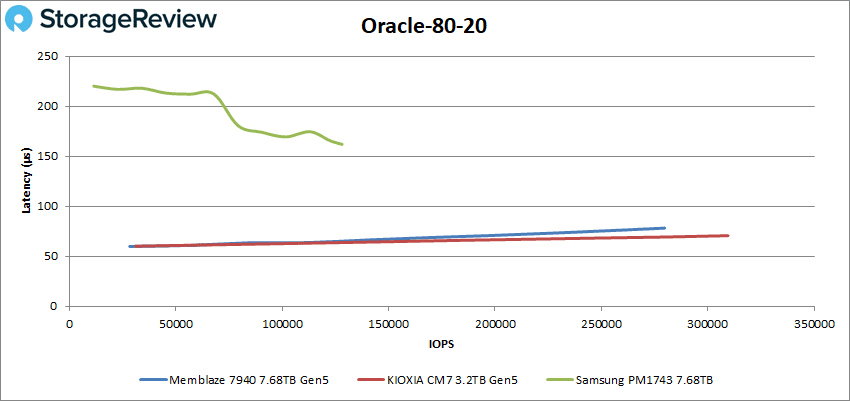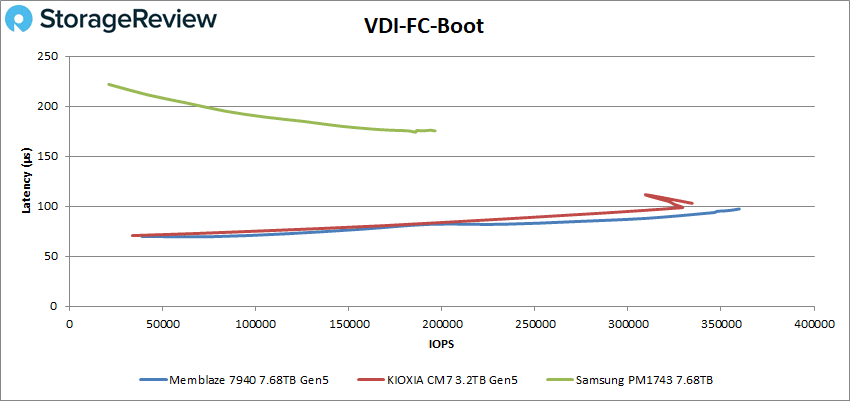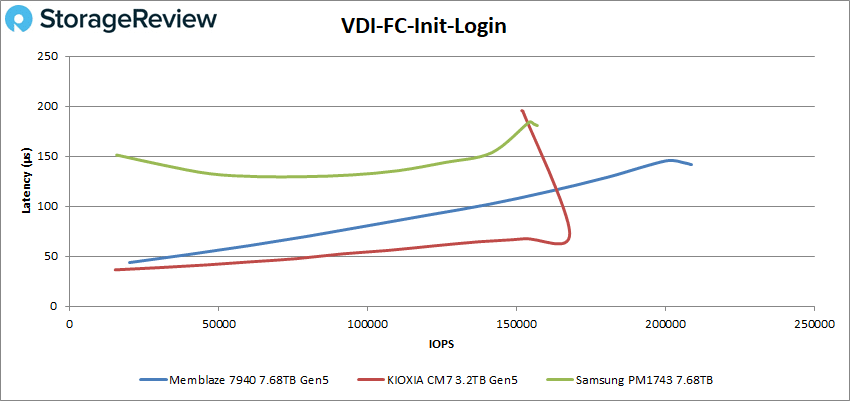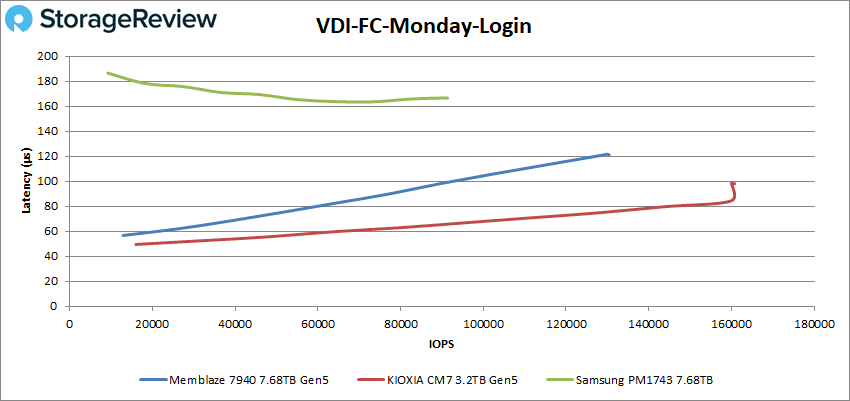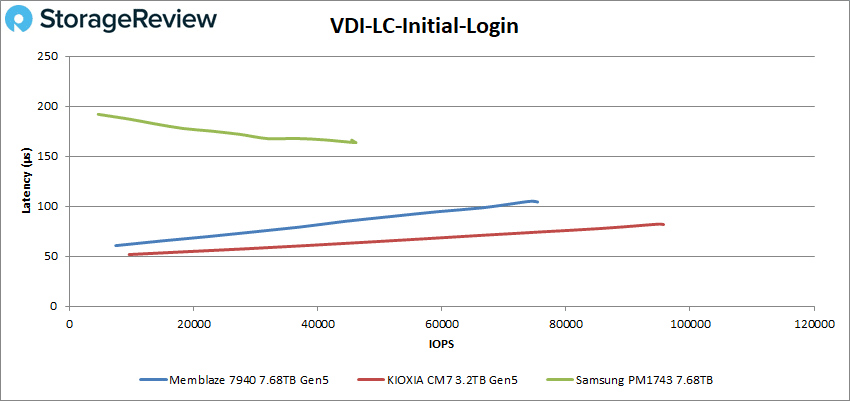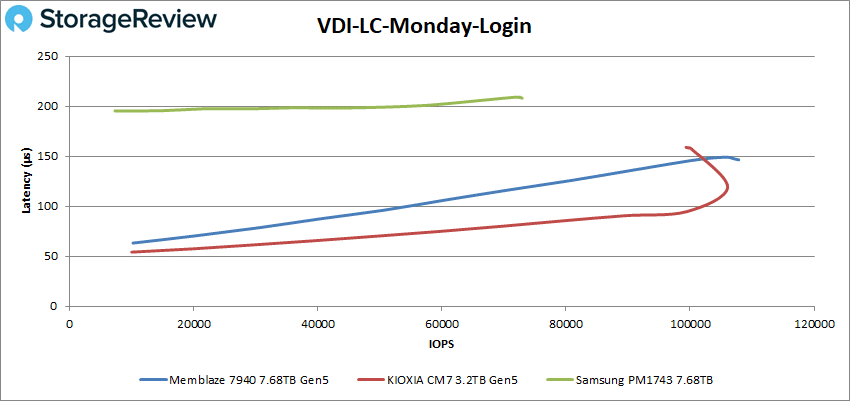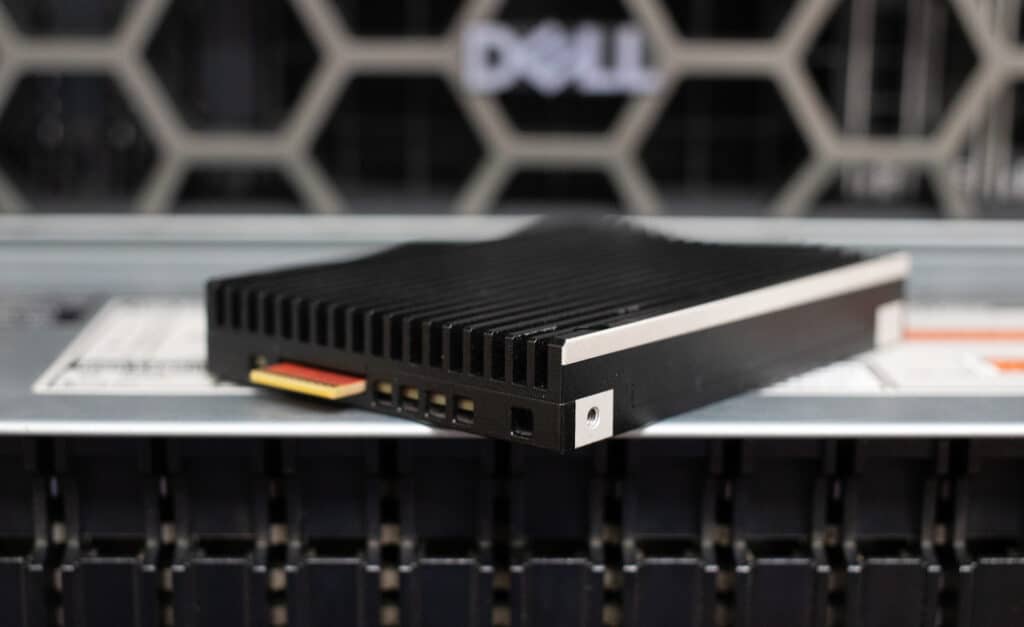The Memblaze PBlaze7 7940 joins a short list of PCIe Gen5 enterprise SSDs to hit the market, keeping with Memblaze’s impressive releases. This SSD is focused on performance, reinforced by its development on the Multi-Stream Unified Flash Platform (MUFP), and has an array of advanced features. This Memblaze drive is a dependable option for crucial business apps and data storage needs. This review will dig deeper into the specifications, reliability, advanced enterprise feature set, and performance.
The Memblaze PBlaze7 7940 joins a short list of PCIe Gen5 enterprise SSDs to hit the market, keeping with Memblaze’s impressive releases. This SSD is focused on performance, reinforced by its development on the Multi-Stream Unified Flash Platform (MUFP), and has an array of advanced features. This Memblaze drive is a dependable option for crucial business apps and data storage needs. This review will dig deeper into the specifications, reliability, advanced enterprise feature set, and performance.
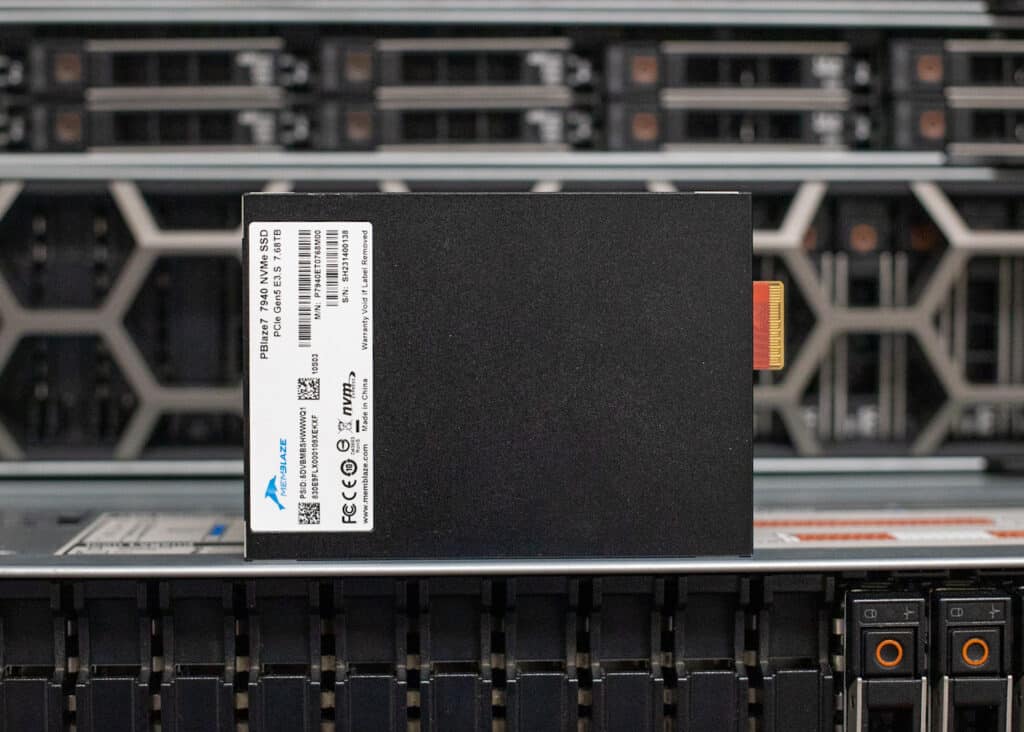
Memblaze PBlaze7 7940 Series Performance
Starting with performance, 4K random performance for the 7946 is quoted up to an impressive 2.8 million IOPS and 700K IOPS for reads and writes, respectively (400K IOPS for the 7940 model). The sequential read and write performance also demonstrates substantial improvements over the previous Gen4 drives, potentially reaching 14GB/s read and 10GB/s write. This signifies a massive boost in sequential performance and a significant reduction in read and write latency with an impressive 55μs read and 9μs write. This performance profile ensures a high Quality of Service (QoS), making it an ideal choice for latency-sensitive applications.
In addition to straight-line performance, the PBlaze7 7940 Series stands out regarding power efficiency. With up to 970MB/s sequential read performance per watt, it showcases Memblaze’s focus on energy efficiency. This is achieved through hardware design and firmware optimization, maximizing hardware utilization while minimizing the impact on server heat dissipation. In addition, the 7940 Series offers dynamic power control (with power mode settings ranging from 12W to 25W) to provide flexibility and adaptability in various usage scenarios.
Memblaze PBlaze7 7940 Capacities and Form Factors
One of the more unique aspects of the PBlaze7 7940 Series is its versatility in terms of form factors and capacities. It spans a range of capacities from 3.2TB to 15.36TB, ensuring compatibility is maintained across various deployment environments.
The availability in multiple form factors, including 2.5-inch U.2, E3.S 1T, E3.S 2T, E1.S, and HHHL AIC, further enhances its suitability for various infrastructure setups. The E3.S 2T stands out as the first drive we’ve seen utilizing this form factor. Specifically, it falls in the middle range regarding size within the EDSFF family, offering a reasonable compromise between physical dimensions and storage capacity.
With so many options, whether you’re working with standard servers, hyperscale systems, or compact, space-constrained systems, this new enterprise SSD family will work in any configuration you have.
Memblaze PBlaze7 7940 Enterprise Features
The PBlaze7 7940 Series offers an impressive enterprise feature set, including Single Root I/O Virtualization (SR-IOV) support. This technology improves performance and resource allocation for virtual machines in virtualized environments like data centers and cloud computing, increasing efficiency and reducing resource contention.
Reliability and security are top priorities for the PBlaze7 7940 Series NVMe enterprise SSD. TCG Opal2.0 and AES 256 Data Encryption bolster security, while 128K Atomic Write ensures data consistency. Sanitize securely erases sensitive information, and Full Data Path Protection with Power Failure Protection guarantees data integrity. Secure Download and Secure Boot fortify against unauthorized access, making it a resilient choice for enterprise data storage.
Memblaze has also packed the 7940 Series with an extensive list of easy-to-use advanced features. Designed for simplicity and performance optimization, this SSD supports NVMe-MI 1.2b (ARP) to simplify management. It offers Telemetry for performance insights and allows firmware upgrades without system resets. The Persistent Event Log aids in troubleshooting and analysis, while Latency Statistics and High Latency Logging facilitate performance monitoring. Advanced features like Timestamp assists in event tracking, and Weighted Round Robin 8TB/s Enterprise TRIM intelligently manages data for peak performance, catering to the diverse needs of modern enterprise environments.
Memblaze PBlaze7 7940 Specifications
| PBlaze7 7940 | PBlaze7 7946 | |||||
| User Capacity (TB) | 3.84 | 7.68 | 15.36 | 3.2 | 6.4 | 12.8 |
| Form Factor | 2.5-inch U.2, E3.S 1T, E3.S 2T, E1.S, and HHHL AIC | |||||
| Interface | PCIe 5.0 x 4 | |||||
| 128KB Sequential Read | up to 14 GB/s | |||||
| 128KB Sequential Write | up to 10 GB/s | |||||
| Sustained Random Read (4KB) IOPS | up to 2800K | |||||
| Sustained Random Write (4KB) IOPS (Steady State) |
|
|||||
| Lifetime Endurance DWPD |
|
|||||
| Random R/W Latency | 55/9μs | |||||
| Sequential R/W Latency | 8/9μs | |||||
| Operating Temperature | Ambient: 0℃ to 35℃ with suggested airflow; Case: 0℃ to 77℃ | |||||
| Uncorrectable Bit Error Rate | < 10-17 | |||||
| Mean Time Between Failures | 2 million hours | |||||
| Protocol | NVMe 2.0, OCP 2.0 | |||||
| NAND Flash Memory | 3D TLC NAND | |||||
| Operation System | RHEL, SLES, CentOS, Ubuntu, Windows Server, VMware ESXi | |||||
| Power Consumption | < 25 W | |||||
| Basic Feature Support | Power Failure Protection, Full Data Path Protection, S.M.A.R.T, Flexible Power Management, Hot Pluggable | |||||
|
Advanced Feature Support |
TRIM, Multi-namespace, AES 256 Data Encryption & Crypto Erase, EUI64/NGUID, Variable Sector Size Management & NVMe End-to-End Data Protection (DIF/DIX), Firmware Upgrade without Reset, Timestamp, Weighted Round Robin, Persistent Event Log, Telemetry, Secure Download, Secure Boot, TCG OPAL2.0, 128K Atomic Write, NVMe-MI, SR-IOV | |||||
| Software Support | Open-source management tool, CLI debug tool, OS in-box driver (Easy system integration) | |||||
Memblaze PBlaze7 7940 Gen5 SSD Performance
Testbed
To test the Memblaze PBlaze7 7940 Gen5 SSD, we leveraged the Dell PowerEdge R760 in our test lab. The R760 is a highly versatile 2U rackmount server that supports two 4th generation Intel Xeon processors with configurations that support up to 24 NVMe drives. This general-use server is intended for mixed workloads, databases, and VDI.
Dell PowerEdge R760 Configuration
- Dual Intel Xeon Gold 6430 (32 cores/64 threads, 1.9GHz base)
- 1TB DDR5 RAM
- Ubuntu 22.04
For ultimate flexibility, we also worked with Serial Cables, who supplied us with an 8-bay PCIe Gen5 JBOF for U.2/U.3, M.2, and EDSFF SSD testing. This allows us to test all current and emerging drive types on the same test hardware.
The Memblaze PBlaze7 7940 marks our second Gen5 SSD with this test platform, following our initial go with the KIOXIA CM7 (results of which we will add to the charts below). Our performance comparison also includes the Samsung PM1743 Gen5 SSD. Notably, the 7940 and PM1743 each have a 1 DWPD endurance rating, in contrast to the CM7-V’s 3 DWPD rating.
VDBench Workload Analysis
When benchmarking storage devices, application testing is best, and synthetic testing is second. While not a perfect representation of actual workloads, synthetic tests help baseline storage devices with a repeatability factor that makes it easy to compare apples-to-apples between competing solutions. These workloads offer a range of testing profiles ranging from “four corners” tests and common database transfer size tests to trace captures from different VDI environments.
These tests leverage the common vdBench workload generator, with a scripting engine to automate and capture results over a large compute testing cluster. This allows us to repeat the same workloads across various storage devices, including flash arrays and individual storage devices. Our testing process for these benchmarks fills the entire drive surface with data and then partitions a drive section equal to 25% of the drive capacity to simulate how the drive might respond to application workloads. This differs from full entropy tests, which use 100 percent of the drive and take them into a steady state. As a result, these figures will reflect higher-sustained write speeds.
Profiles:
- 4K Random Read: 100% Read, 128 threads, 0-120% iorate
- 4K Random Write: 100% Write, 128 threads, 0-120% iorate
- 64K Random Read: 100% Read, 128 threads, 0-120% iorate
- 64K Random Write: 100% Write, 128 threads, 0-120% iorate
- 16K Sequential Read: 100% Read, 32 threads, 0-120% iorate
- 16K Sequential Write: 100% Write, 16 threads, 0-120% iorate
- 64K Sequential Read: 100% Read, 32 threads, 0-120% iorate
- 64K Sequential Write: 100% Write, 16 threads, 0-120% iorate
- 4K, 8K, and 16K 70R/30W Random Mix, 64 threads, 0-120% iorate
- Synthetic Database: SQL and Oracle
- VDI Full Clone and Linked Clone Traces
In our first VDBench Workload Analysis, random 4K read, the PBlaze7 7940 recorded a peak of just 1.1 million IOPS (at 183.2 µs), while the KIOXIA CM7 more than doubled this number with 2.7 million IOPS at a latency of 188.6µs.
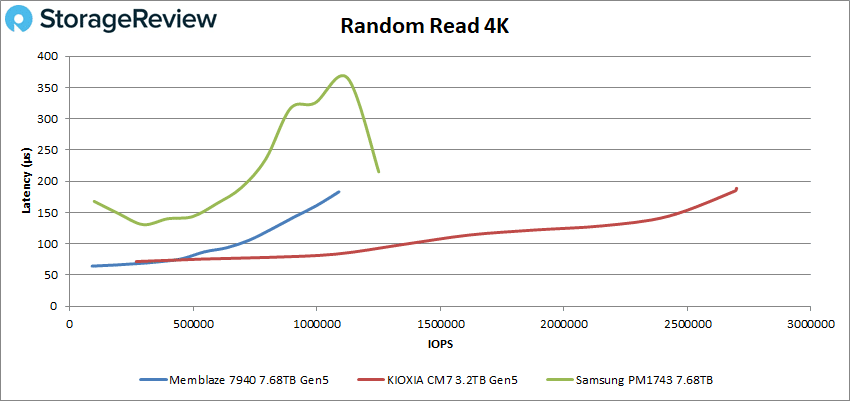
Switching over to 64k sequential workloads, the PBlaze7 7940 exhibited impressive performance. In reads, it peaked at 216K IOPS (13.5GB/s) with 295.4µs in latency. This was noticeably better than the KIOXIA drive, which achieved a peak of 11.4GB/s (182K IOPS) with a latency of 349.5µs in read activity.
In sequential writes, the PBlaze7 7940 edged out the KIOXIA drive, peaking at 4.28GB/s (69K IOPS) at a latency of 928.8µs. The CM7 drive peaked at 4.18GB/s write (67K IOPS) at 951.7µs in latency.
Next up are the 16K tests. In sequential reads, the PBlaze7 7940 demonstrated a peak of just 161K IOPS (2.5GB/s) at 191.3µs, while the KIOXIA CM7 achieved an impressive 352K IOPS (5.5GB/s) at 90.7µs.
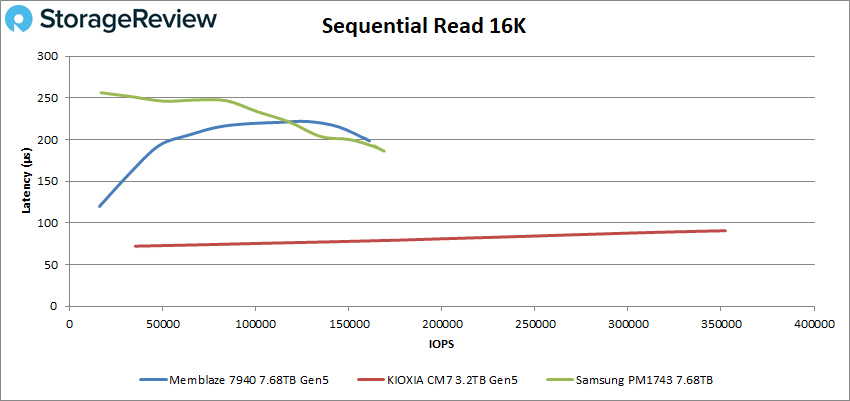
Now for our mixed read/write profiles, starting with 70/30 4K. The PBlaze7 7940’s peak performance here hit 562K IOPS at 110µs. The KIOXIA CM7 drive expectedly fared better at 881K IOPS at 71.6µs.
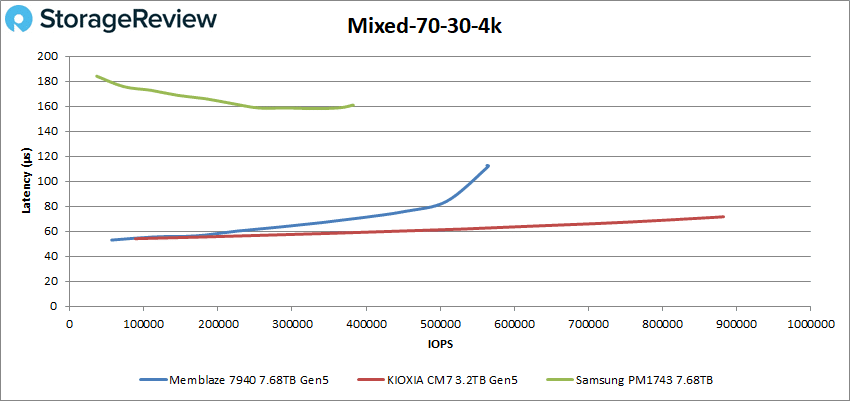
In the 70/30 16K profile, the PBlaze7 7940 reached 327K IOPS at 195.6µs, while the KIOXIA CM7 completed the test at 350K IOPS at 181.4µs.
The following two tests are 64k random benchmarks. In reads, the PBlaze7 7940 posted a very impressive and steady 188K IOPS at 170.1µs, which was more than double the KIOXIA drive’s 81K IOPS at 219.2µs (which also took a pretty steep spike in performance at the end of the test).
In 64k random writes, the Memblaze and KIOXIA drives were neck and neck, though the 7940 pulled away at the end with 64K IOPS at 245.1µs in latency. In comparison, the KIOXIA CM7 drive peaked at 63K IOPS with a latency of 247.6µs.
Our next set of tests is our SQL workloads: SQL, SQL 90-10, and SQL 80-20. Starting with the standard SQL workload, the PBlaze7 7940 posted a peak of 429K IOPS before taking a spike in performance at the end, while the KIOXIA CM7 peaked at 382K IOPS with a latency of 83.5µs.
In SQL 90-10, both Gen5 drives had nearly identical performance. Here, the PBlaze7 7940 hit 392K IOPS at the end of the test with a latency of 81.2µs, while the KIOXIA peaked at 397K with a latency of 80.2µs.
With SL 80-20, the PBlaze7 peaked at 366K IOPS with a latency of 87µs. In comparison, the KIOXIA CM7 posted a peak performance of 298K IOPS at 73.5µs.
Next are the Oracle workloads (Oracle, Oracle 90-10, and Oracle 80-20. Starting with the general Oracle workload, the PBlaze7 7940 had a peak performance of 361K IOPS (98µs), while the KIOXIA CM7 peaked at 416K IOPS at 85.1µs.
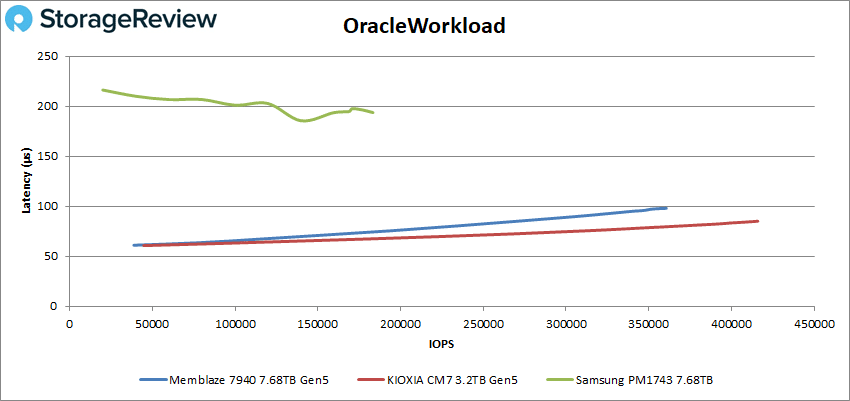
Next is Oracle 80-20, where the PBlaze7 7940 peaked at 280K IOPS with a latency of 78.2µs. In comparison, the CM7 peaked at 310K IOPS with a steady latency of 70.6µs.
Next, we switched to our VDI clone test, Full and Linked. VDI Full Clone (FC) Boot 7940 peaked at 360K IOPS with a latency of 97.3µs (though it had a minor blip in performance at the end). In comparison, the KIOXIA CM7 peaked at 335K IOPS with a latency of 103µs.
During VDI FC Initial Login, the PBlaze7 7940 achieved 209K IOPS (141.7µs), while the KIOXIA CM7 drive fell back a little, peaking at 168K IOPS with a latency of 73.2µs before it took a significant spike in performance at the very end of the test.
With VDI FC Monday Login, the PBlaze7 7940’s performance hit 130K IOPS at 121.3µs in latency. In comparison, the KIOXIA CM7 posted an impressive 161K IOPS at a latency of 98.1µs.
For the VDI Linked Clone (LC) Boot, the PBlaze7 7940 ended the test at a very steady 166K IOPS at 96µs in latency, while the CM7 KIOXIA drive achieved pretty much identical results with 166K IOPS and 96.3µs.
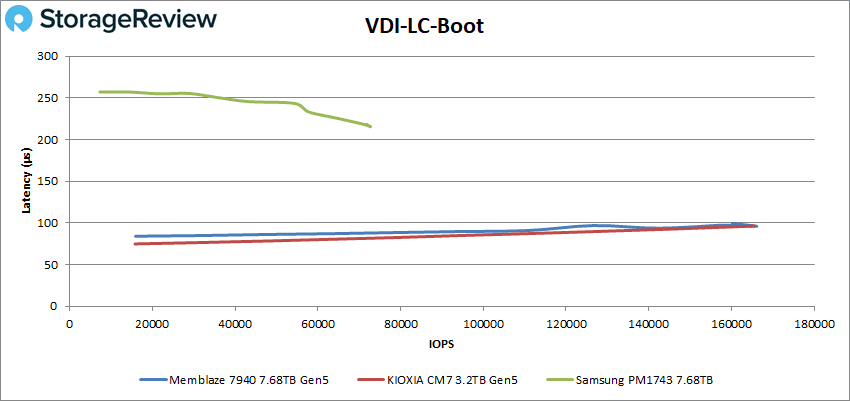
For VDI LC Monday Login, the PBlaze7 7940’s performance peaked at 108K IOPS at 146.5µs in latency. In comparison, the CM7 peaked at 106K IOPS with a latency of 119µs (though showing a spike in performance at the very end, which took it to 100K IOPS).
Conclusion
The Memblaze PBlaze7 7940 has entered the enterprise storage arena as one of the pioneering Gen5 drives, marking a significant step forward in storage technology alongside the KIOXIA CM7. Overall, the new Memblaze SSD is a solid solution for demanding enterprise environments where performance, reliability, and data security are paramount–from database management to virtualized environments. Moreover, the availability of a diverse range of form factors, including 2.5-inch U.2, E3.S 1T, E3.S 2T, E1.S, and HHHL AIC, provides enterprises with a ton of flexibility in adapting the PBlaze7 7940 to their specific infrastructure setups.
In its performance analysis, we compared the PBlaze7 7940 to the KIOXIA CM7 enterprise Gen5 SSD (meant for mixed-use cases with higher endurance levels) to offer valuable insights into their respective capabilities. We also compared it to the Samsung PM1743 Gen5 SSD single DWPD SSD. Regarding strengths, the PBlaze7 7940 excelled in 64K random read and random write tasks, demonstrating notably better results than the CM7. Additionally, it exhibited impressive performance in 64K sequential performance (again, better than the CM7), highlighting its proficiency in handling large sequential read operations. However, it’s essential to note that the KIOXIA drive outperformed the PBlaze7 7940 in areas like random 4K reads/writes, 16K sequential, and mixed read/write profiles, indicating its superiority in certain read-heavy and mixed-use scenarios. Ultimately, the choice between these two drives should be guided by specific workload requirements, as both demonstrate their strengths in distinct performance categories. To be fair KIOXIA also offers a single DWPD drive, we just haven’t tested one yet.
The Memblaze PBlaze7 7940 is also built with a wide array of advanced features. For example, it adheres to the NVMe 2.0 and OCP 2.0 specifications, offering advanced capabilities such as NVMe-MI 1.2b for efficient out-of-band management, end-to-end data protection, TCG Opal 2.0 encryption, and support for 128K atomic writes. These features collectively enhance data security, integrity, and performance optimization, making the PBlaze7 7940 a compelling choice for businesses with strict storage requirements.
As usual with Memblaze, the PBlaze7 7940 Series NVMe SSD is a compelling storage solution that excels in many performance categories, power efficiency, and versatility. This makes it well-suited for a wide range of applications, from latency-sensitive operations to enterprise-level deployments.
Engage with StorageReview
Newsletter | YouTube | Podcast iTunes/Spotify | Instagram | Twitter | TikTok | RSS Feed

